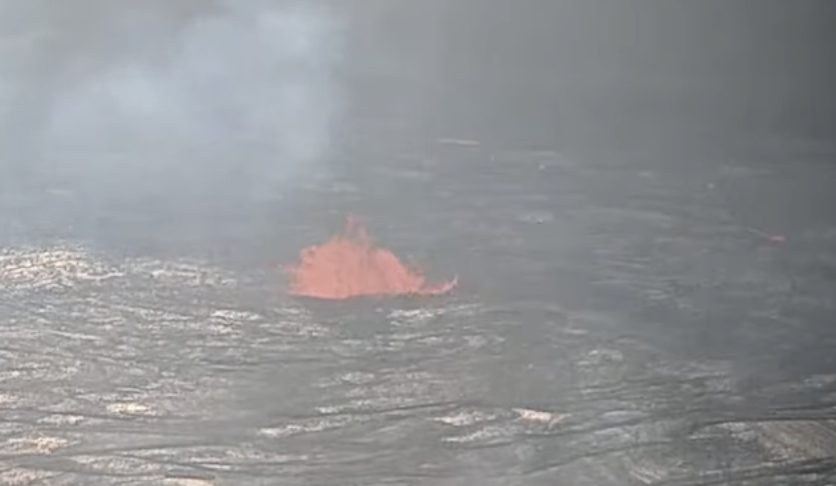Hawaiʻi Island Starts the New Year with Kīlauea Eruption
Live footage of Kīlauea’s eruption can be accessed on the U.S. Government Survey’s youtube.
On Thursday, January 5, Kilauea began experiencing volcanic activity at the top of its crater. Since the volcano’s initial eruption, lava has continued flowing out of the crater’s vents, creating a lava lake in the eastern portion of the Halemaʻumaʻu crater, according to the most recent observatory update provided by the U.S. Geological Survey.
Kīlauea is one of the most active volcanoes in Hawaiʻi, as well as one of the most active volcanoes in the world. As of now, Kīlauea’s threat level is labeled as “WATCH”, meaning that the volcano is under close observation, however there is no imminent danger yet. All recent activity remains contained to the crater’s eastern half and the western half’s basement.
According to the U.S. Geological Survey, the main concern regarding Kīlauea’s recent eruption is that the summit is located near Hawaiʻi Volcanoes National Park. If volcanic gas blows toward the park, “water vapor (H2O), carbon dioxide (CO2), and sulfur dioxide (SO2)” could make their way into the lungs of residents and tourists. Kīlauea’s vog also creates the potential for agricultural damage and livestock endangerment.
For more information regarding Kīlauea’s safety hazards, refer to: https://www.usgs.gov/observatories/hawaiian-volcano-observatory/hazards
Live feed of Kīlauea’s eruption can be accessed at https://www.youtube.com/usgs/live

EMAIL: [email protected]
Hi! My name is Logan and this is my second year on Ka Mō’ī. I am a part of the c/o 2023 and wanted to make this last year memorable for everyone by being a part of the school newspaper. When I'm not on the hill, you can usually find me working at Baskin Robbins as a cake decorator on the weekends. As for my post-high school plans, I intend on double majoring in Communications and Education. After graduating from college, I hope to return to KS as a teacher or admin for some time while I continue to write and do journalism on the side. Eventually, I plan on pursuing a full-time career in writing (though I don't know exactly what that career will be). With the help of everyone else on Ka Mō’ī, I hope to restore the interest haumāna once had in reading the school newspaper. If you have any questions, feel free to email me!



Auli'i Anuenue Medeiros • Jan 10, 2023 at 9:22 am
This event has definitely been something to pay attention to. Thanks for the updates!